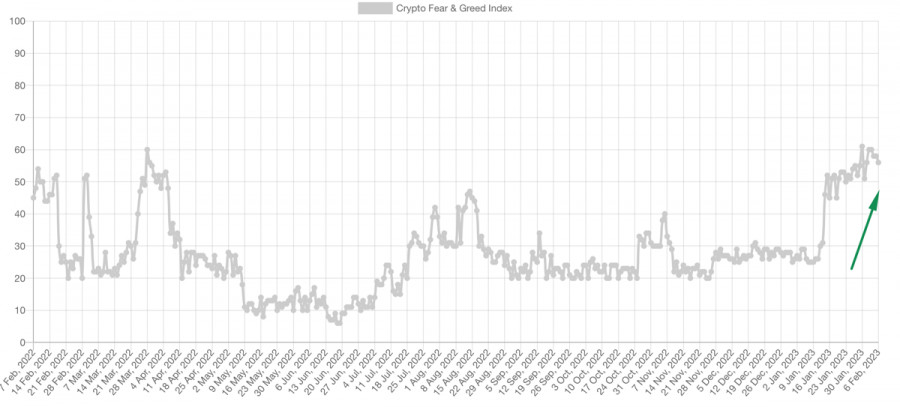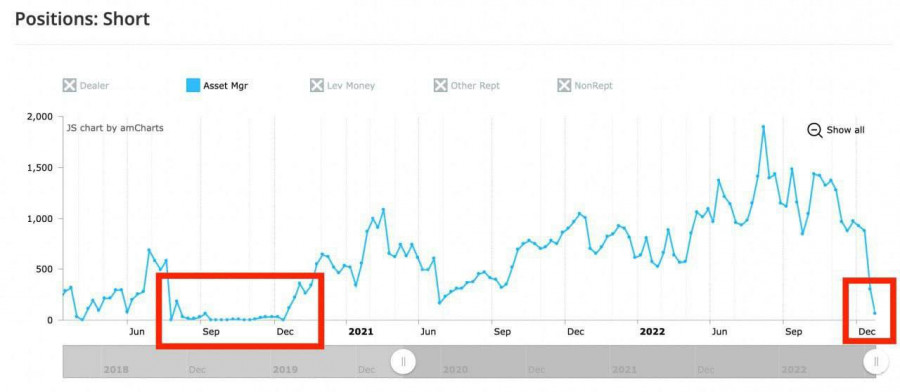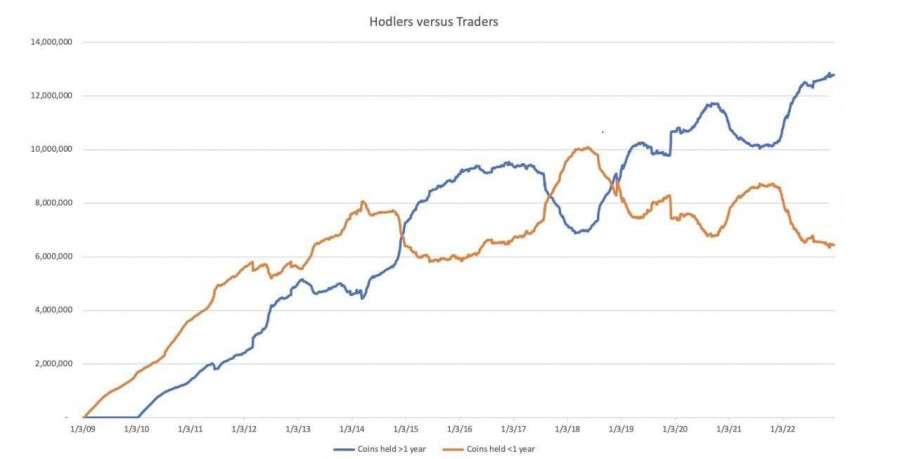
The bullish trend of Bitcoin, which peaked in mid-January, is gradually ending. With each passing day, there is growing confidence that the $22.9k–$23.4k range will be the final zone within the current upward movement of the cryptocurrency.
The difficulties of Bitcoin's upward movement coincided with a similar situation on the stock market. In both cases, the fear and greed index reached the "greed" levels, which indicates a decrease in skepticism about the bullish movement of assets and, as a result, a decrease in short positions.

In addition, difficulties in overcoming the boundaries of $22.9k–$23.4k provoked profit-taking, as a certain part of investors came to the conclusion that the potential of the bullish BTC trend has been fully realized. Santiment experts say that last week there was the largest surge in profit-taking in 2 years.

This greatly reduces the cryptocurrency's bullish potential in the short term. It is also important to note that the rise in price has intensified buying by long-term investors, which is a positive signal, but not for short-term targets.

As a result, the number of addresses storing BTC in the long term has reached a new record, while trader activity continues to decline. This is also reflected in daily trading volumes, which are a key component of the cryptocurrency's upward movement.
DXY Index and Labor MarketAnother forgotten but important reason for the upward movement of BTC was the correction of the U.S. dollar index. The index peaked at 115 at the end of September and has been in correction since then.
However, the asset managed to hold the support area of 100 and resume the upward movement. As of February 6, the DXY is moving upward on rising buying volumes. This means that the stock and crypto markets should expect a sideways or local correction in the near future.
The reason for the strengthening of the U.S. dollar was a combination of two factors. The first is the gradual easing of the Fed's policy due to the growing deflationary movement. The second factor is the strong labor market, despite the constant increase in the rate.
The combination of these factors suggests that, at this stage, the U.S. can avoid a recession and still achieve the desired inflation results by the end of 2023. It is this confidence that allows the U.S. dollar to constantly strengthen.
BTC/USD AnalysisIn addition to "helping" competitors, a strong labor market scares off investors, as the constant emergence of jobs speaks to the strength of the U.S. economy. This may provoke the Fed to take additional measures to combat inflation, and these concerns call into question the feasibility of investing in BTC.
Meanwhile, on the 1D timeframe, Bitcoin made another false breakout of the $23k level and continues to decline. The cryptocurrency made a bearish breakout of the $22.8k support level and is trading near the $22.8k level as of writing.
The technical indicators of the asset indicate a further price decline. The nearest target will be the area of $22.2k–$22.4k, where the lower border of the consolidation corridor passes. Subsequently, BTC may continue its downward movement to $22k and lower to $21.6k.
At the same time, it is important to note that the current corrective movement is of a healing nature and will allow investors to enter the asset with another discount. The accumulation process by long-term investors continues, and the viability of the bearish movement raises questions.
ResultsBitcoin may form the fifth consecutive red candle on 1D, however, we still do not see growing bearish volumes. This suggests that the lower the price falls, the more willing to buy BTC. Given this, we can assume that the $21.6k level will be the final chord of the current corrective movement of Bitcoin.